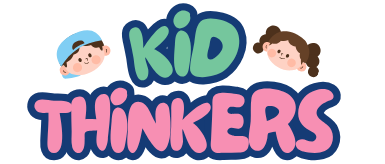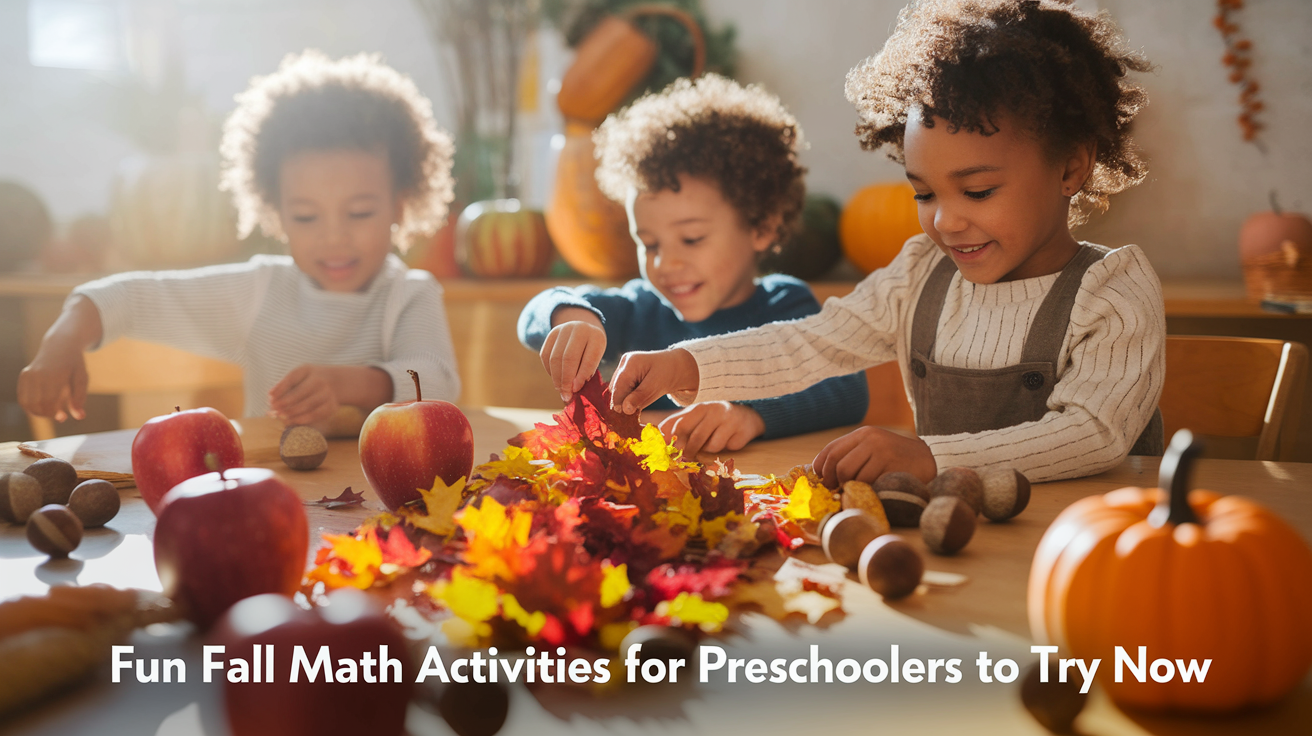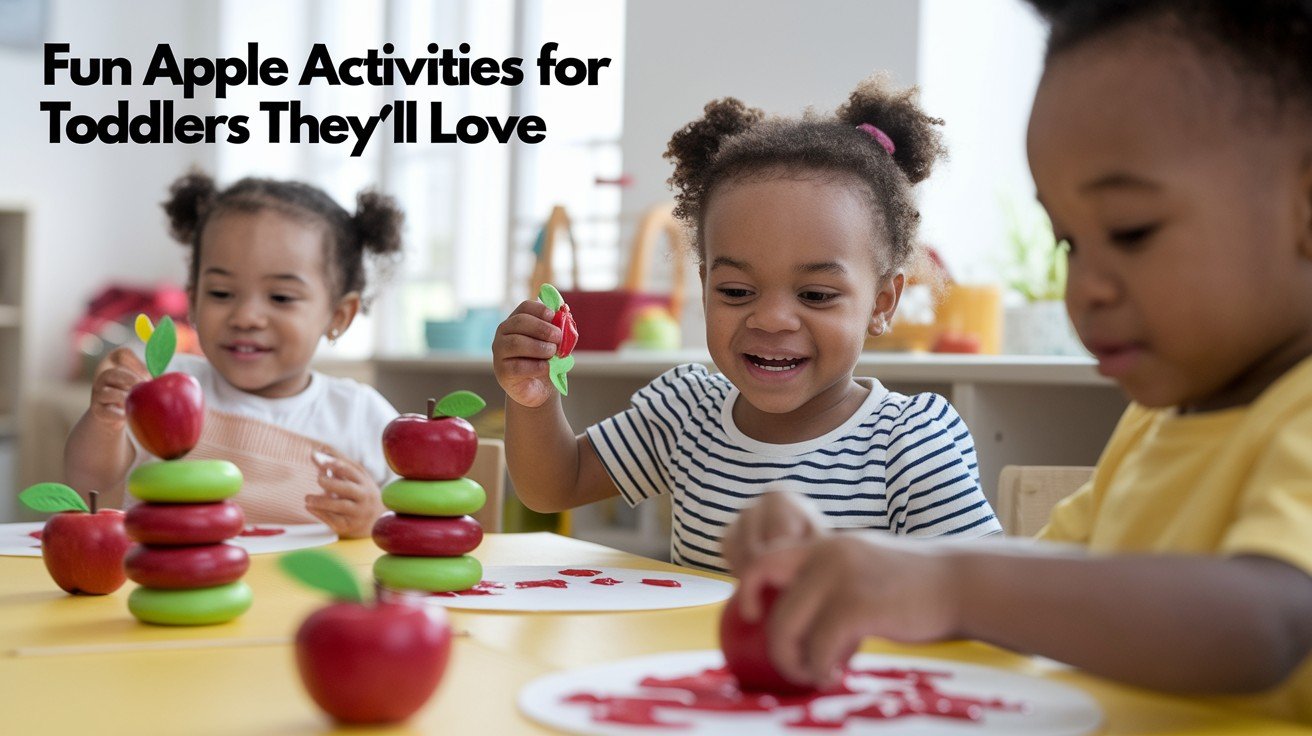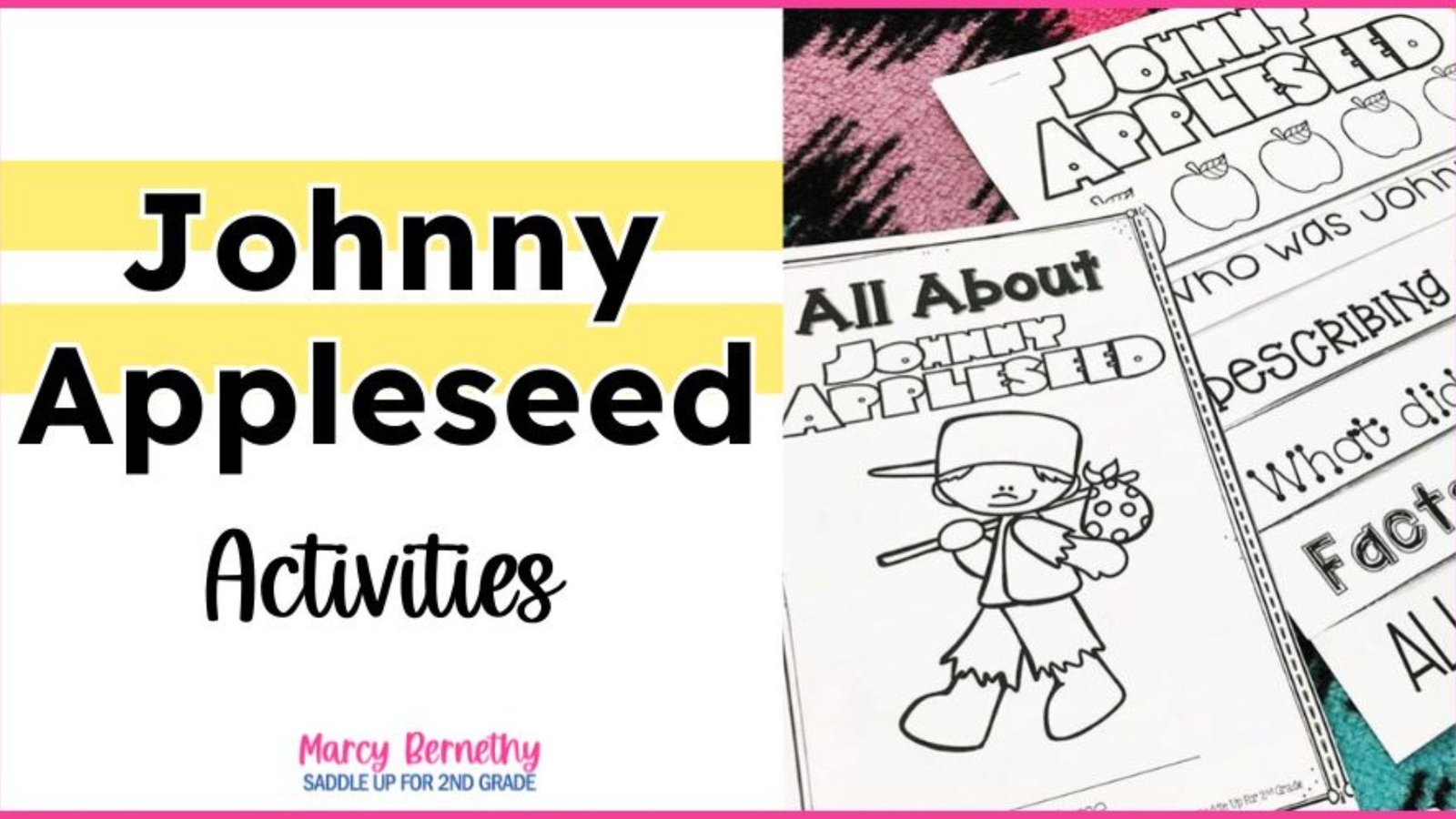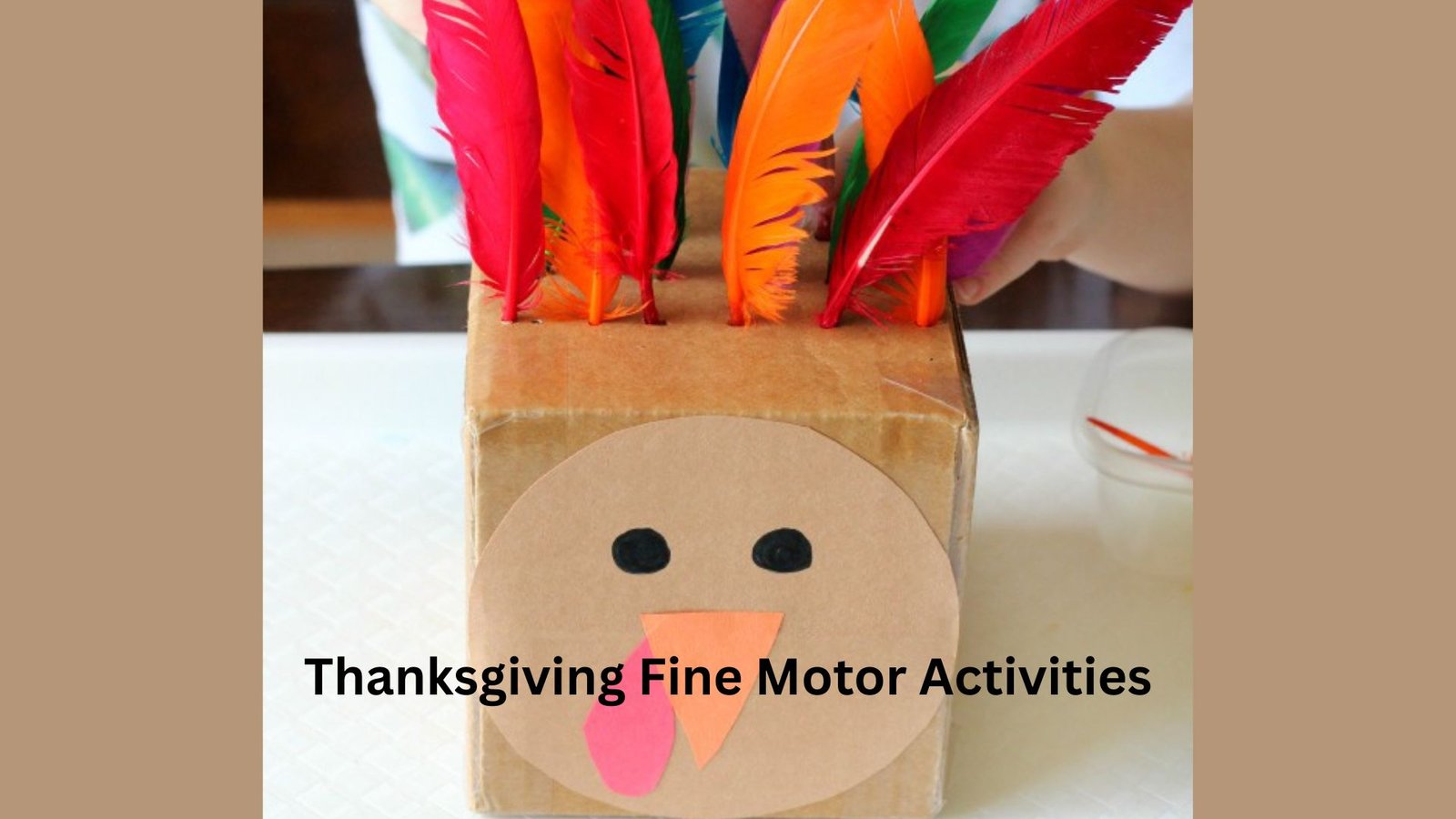Fall is the ideal season for preschool math lessons since nature has all that is required. I’ve seen the excitement of young children counting real pumpkins. This thrill happens rather than pictures, following years spent working with them. The learning sticks whenever kids measure, sort, and touch real objects.
This article shares simple fall math activities with leaves, apples, acorns, and pumpkins. Each one builds real skills as they count in patterns, shape items, and measure in practical, hands-on ways.
These activities benefit those of preschool age. Early elementary ages also benefit from them. The best part? They are learning, even though your child will not know it. For them, autumn treasures make it just fun. Young children should view math as memorable, natural, and playful.
Fun Fall Math Activities
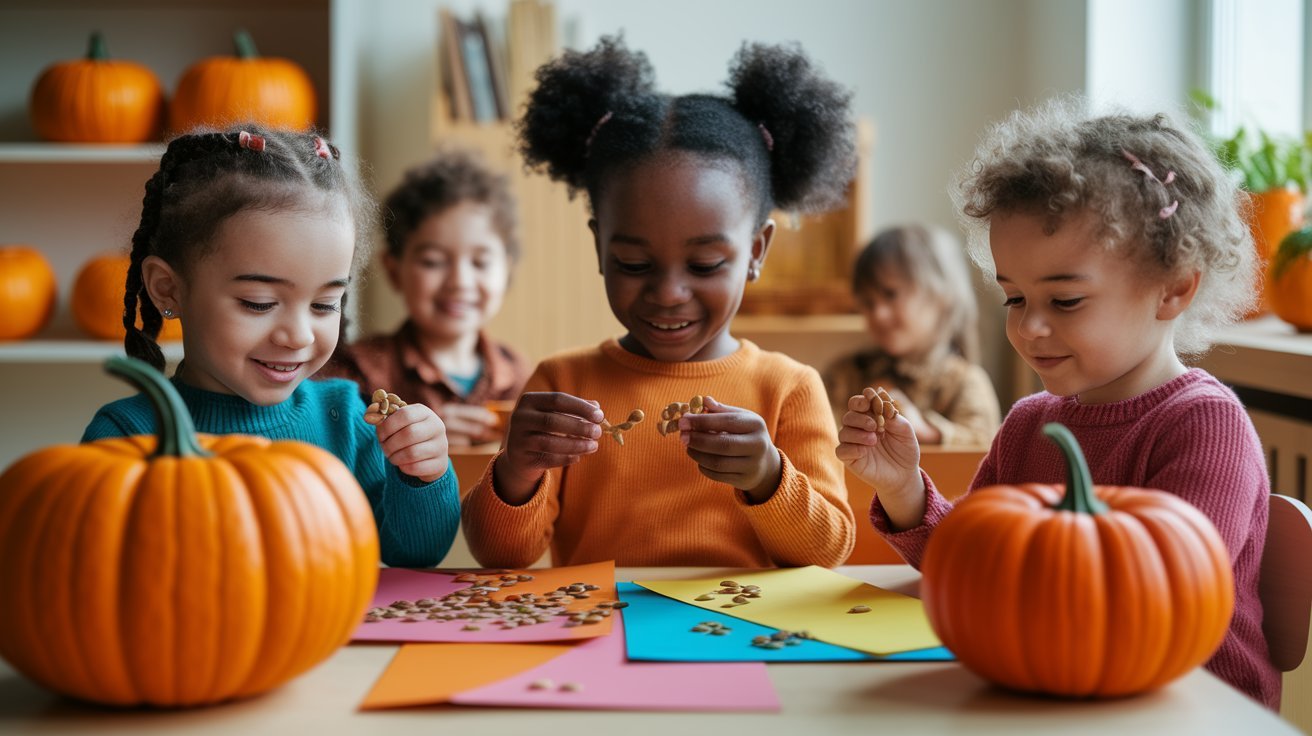
Save pumpkin seeds after carving and let kids count them onto numbered paper. This twenty-minute activity teaches counting and builds finger strength for ages three to six.
Pumpkin Seed Counting
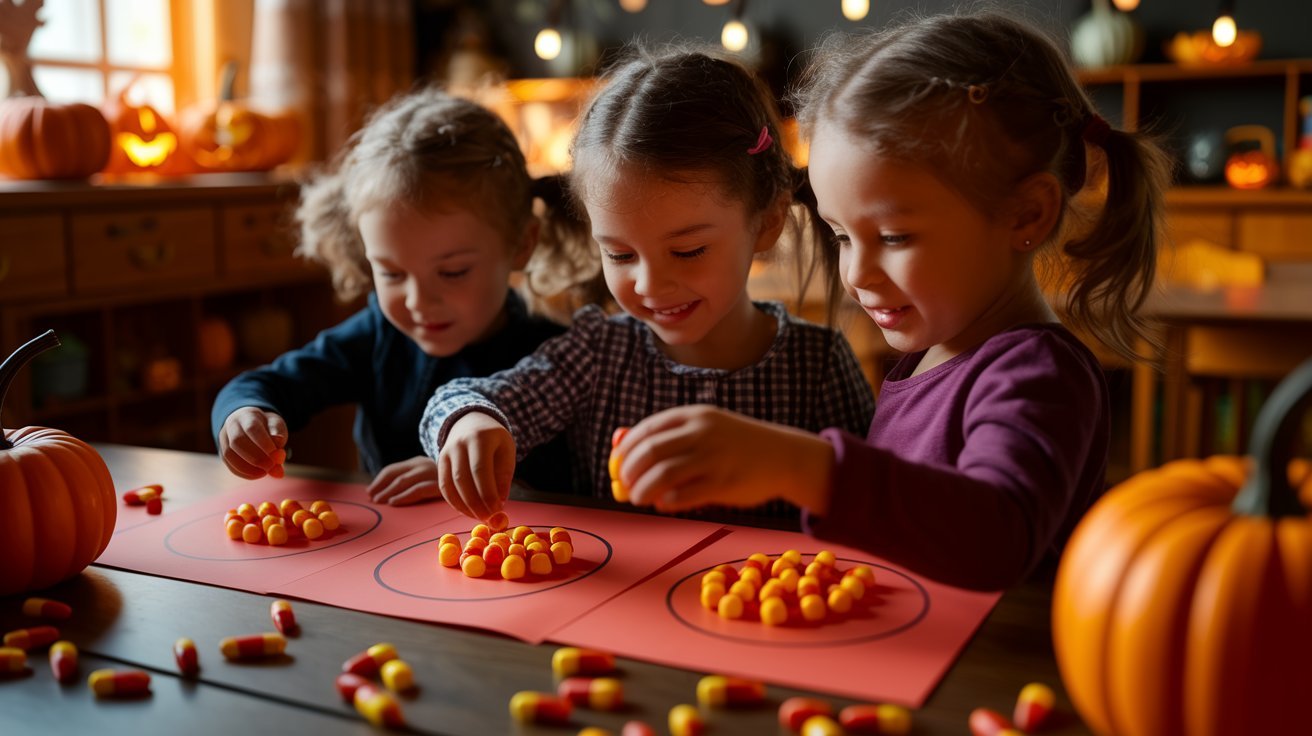
Pumpkin seeds are perfect for teaching kids to count. After you carve a pumpkin, save those seeds and let them dry. Kids love the bright orange color and smooth texture.
I’ve used this activity with dozens of preschoolers. They pick up each seed and count out loud. This teaches them that each number matches one object. You can write numbers on the paper and have them place the correct number of seeds on each number.
The activity takes about twenty minutes. Kids ages three to six love it. Their little fingers get stronger as they pick up each seed. That’s fine motor practice happening right alongside math learning.
Counting Candy Corn
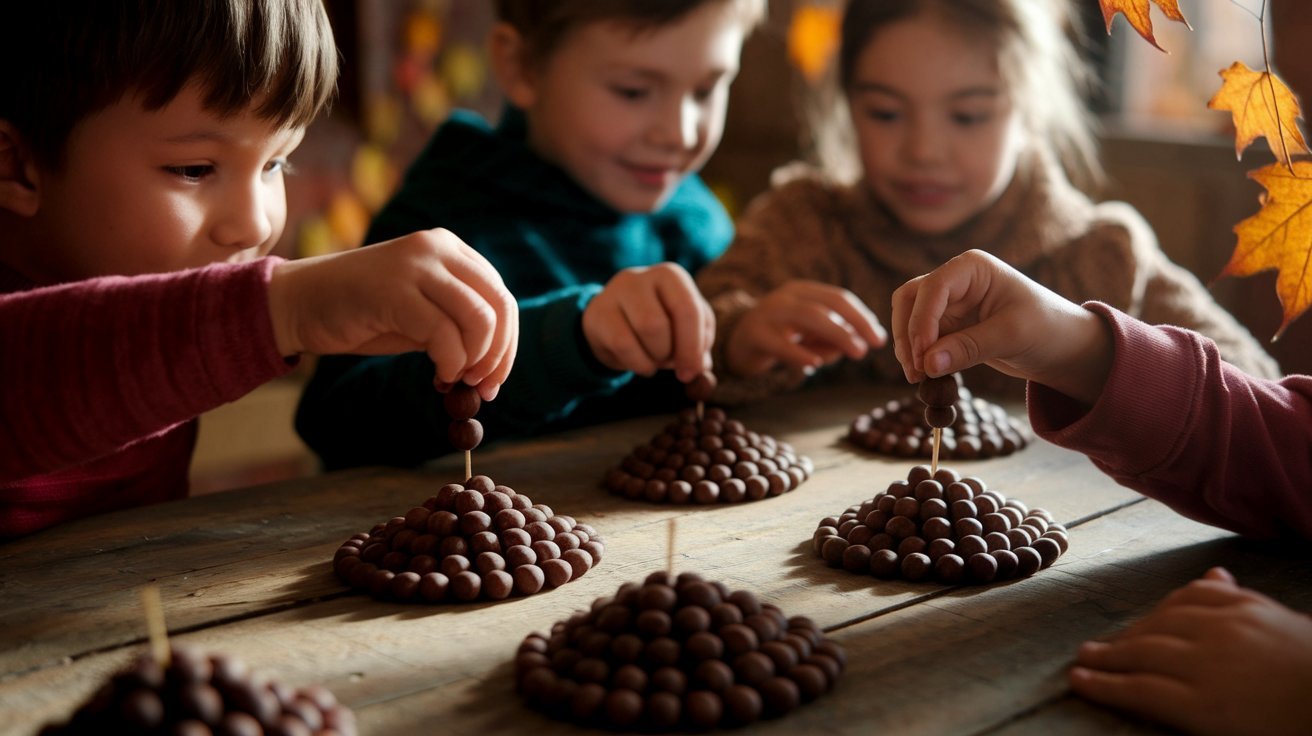
Candy corn turns into a math tool during the Halloween season. Print out simple counting mats or draw circles on paper. Kids place one piece of candy corn in each circle.
You can draw ten circles and have your child count out ten pieces. Or write numbers and let them match the amount. I’ve seen quiet kids suddenly get excited about math when candy corn is involved.
The activity takes twenty to thirty minutes and works best for ages three to five. You can switch this up for winter. Use mini marshmallows or chocolate chips instead. Same math skills, different season.
Acorn Addition

Head outside and collect acorns with your child. Now you have free math counters. Write simple addition problems on cards like “2 + 3” or “1 + 4.” Your child uses acorns to solve each problem.
This takes fifteen to thirty minutes and works for kids ages four to seven. I love this activity because it gets kids outside first, then brings learning inside. They’re more focused after some fresh air.
Place two acorns in one group and three in another. Push them together. Count the total. That’s addition. Kids understand it because they can see and touch the math happening.
Apple Counting Activities
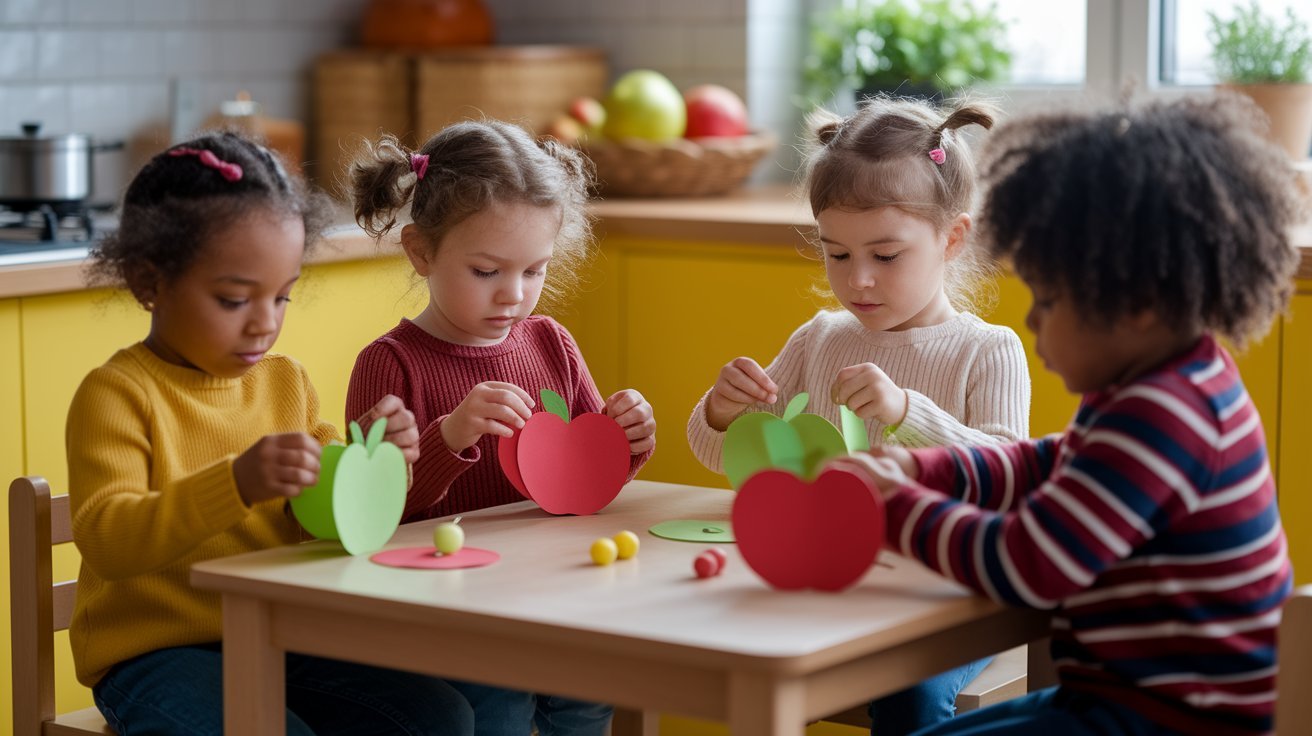
Apples are everywhere in the fall. Use them for math in several ways. Read a counting book about apples. Sing “Five Red Apples” and act it out with real apples or paper cutouts.
Print apple shapes with numbers on them. Use dyed chickpeas to fill in the apples for counting practice, plus fine motor work. Create a color-matching game with red, green, and yellow apples. Set up an apple math center in your classroom or kitchen table.
I once watched a four-year-old create her own apple-counting game. She lined up her toy apples and assigned each one a number. Kids naturally want to organize and count things. These activities work in short bursts of ten to fifteen minutes for younger kids.
Scarecrow Patch Counting Activity
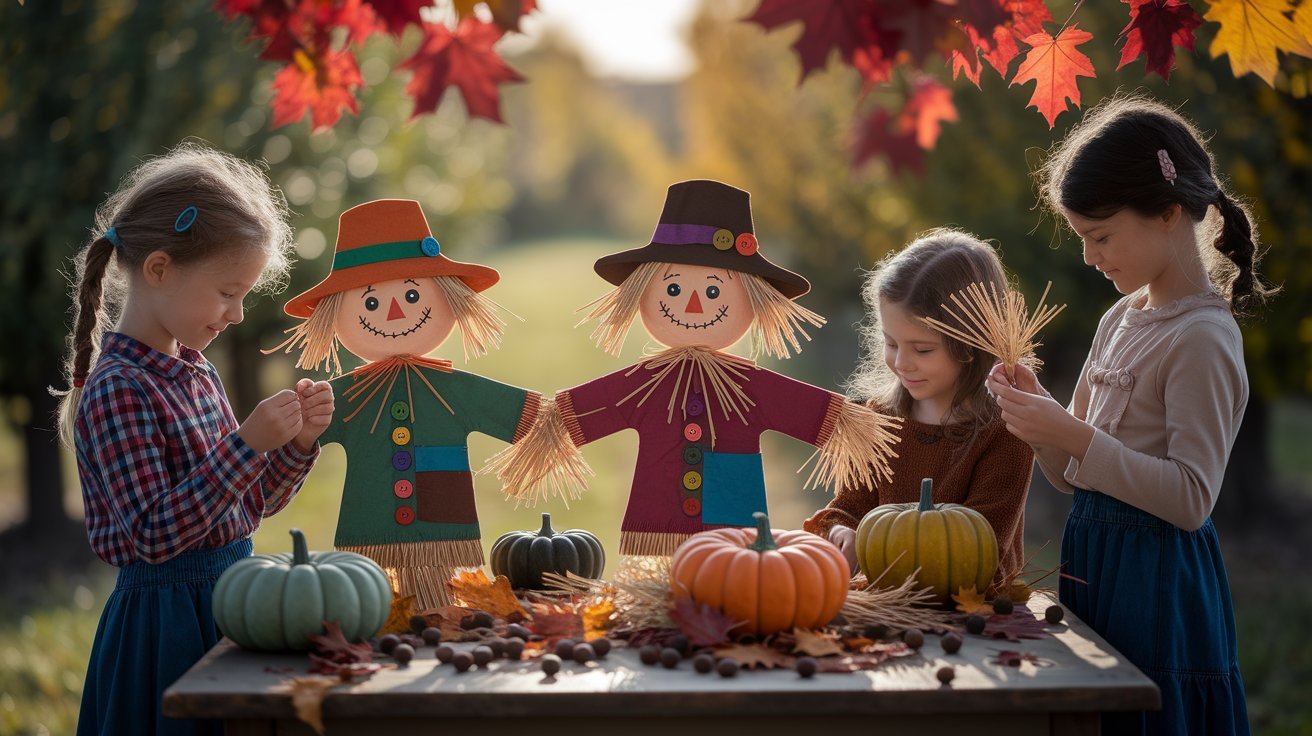
Make or print scarecrow pictures with numbers on them. Kids add the right number of buttons, patches, or straw pieces to each scarecrow. This mixes Halloween fun with number practice.
The visual element helps a lot. Some kids need to see the number and the objects together. I’ve used this in October classrooms, and it becomes a favorite center activity.
Kids return to it again and again. The combination of holiday themes with counting keeps them interested. You can use stickers, buttons, or even small pieces of torn paper for the decorations.
Fall Calendar Numbers
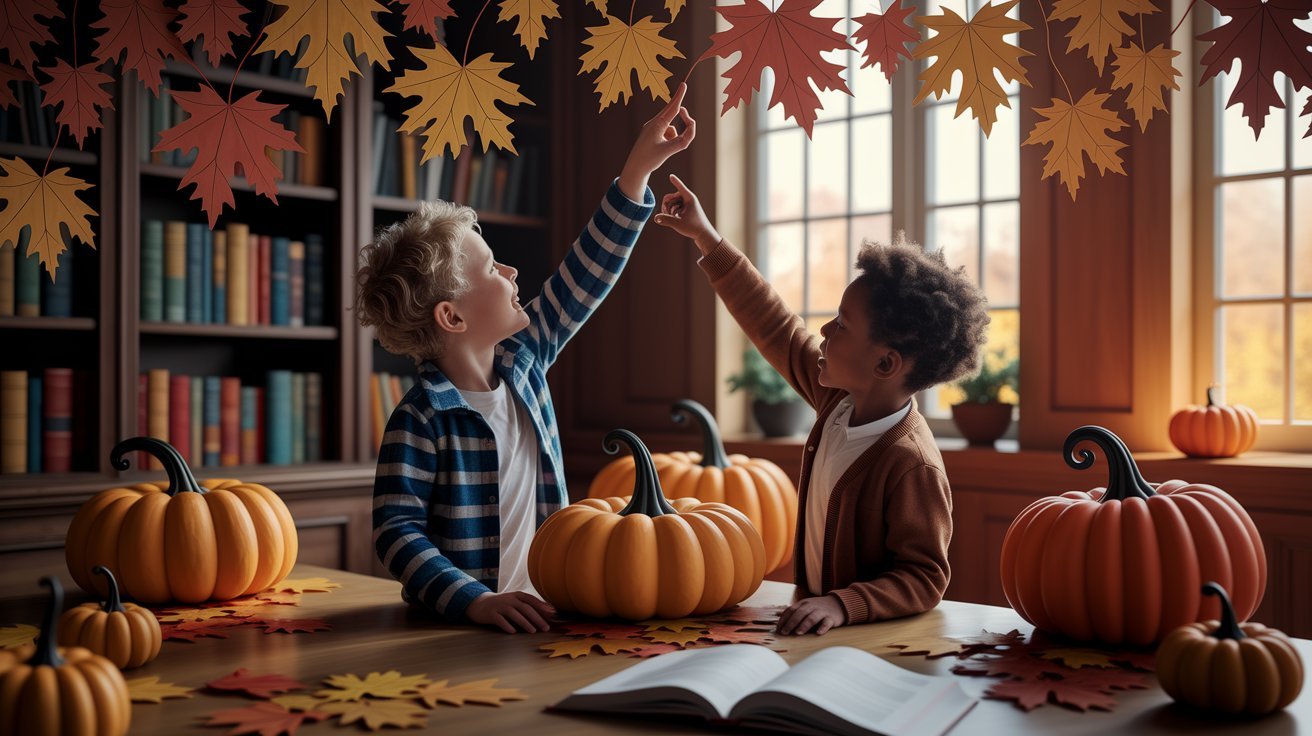
A fall-themed calendar teaches multiple math skills at once. You can use school bus numbers for back-to-school themes or leaves and pumpkins for later in the season. Kids learn number order, counting forward, and date concepts all together.
Hang the calendar where your child can reach it. Let them change the date each day. This daily practice builds number sense naturally. I did this with my own kids, and they learned their numbers without formal lessons.
You can ask questions like “What number comes after twelve?” or “Which number is missing?” This extends the learning beyond simple recognition. The daily routine makes math feel normal and easy.
Leaf Patterns
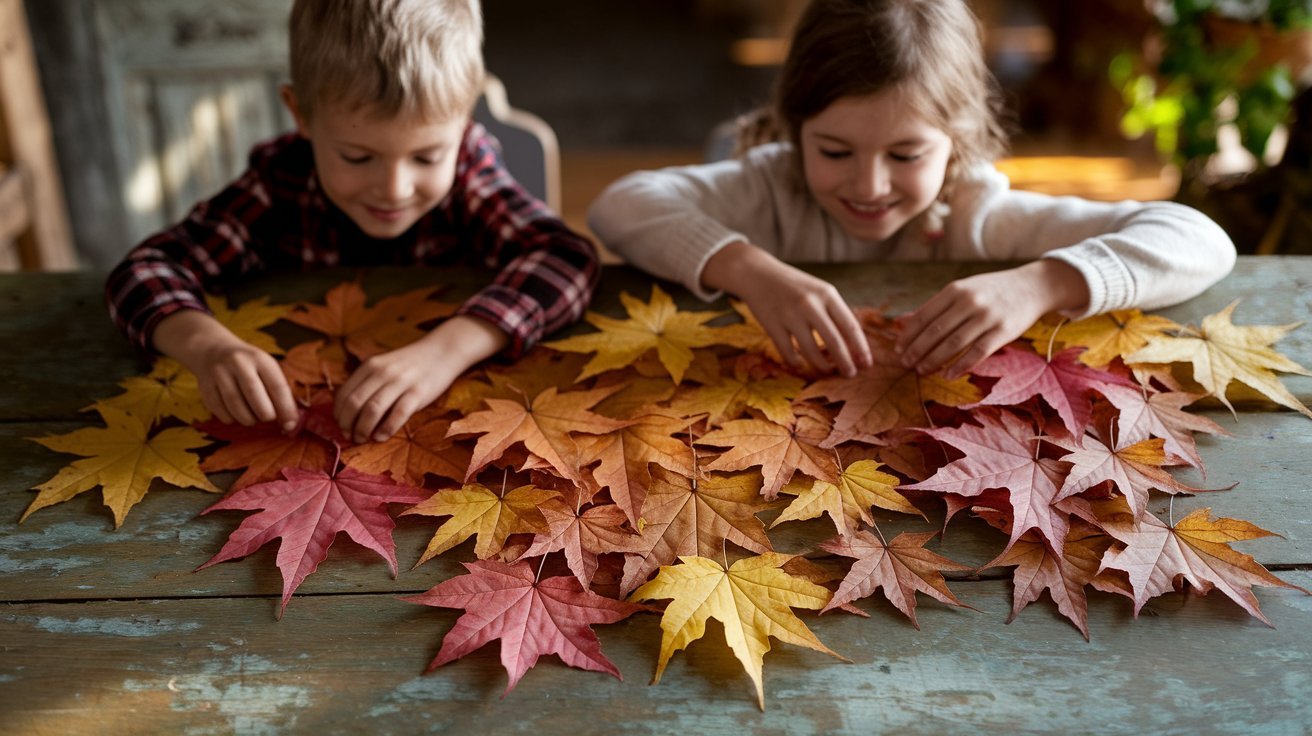
Collect different colored leaves on a nature walk. Back home, create patterns with them. Red, yellow, red, yellow. Big, small, big, small. Oak, maple, oak, maple.
This activity works for kids ages four to eight. Younger ones make simple two-part patterns. Older kids create complex sequences. I start a pattern and let the child continue it. Then they start one for me to finish.
Patterns are the foundation of algebra. When kids recognize and predict patterns, they’re thinking algebraically. The activity lasts fifteen to thirty minutes, depending on interest. Some kids want to glue their patterns down and save them.
Tips for Success
Key strategies for successful fall math learning:
- Let kids lead: Allow children to help prepare materials and choose between activities to increase their investment and interest
- Keep it short and sweet: Fifteen to twenty minutes is plenty; stop before frustration sets in and return to the activity later.
- Match the challenge level: Use smaller numbers (one to five) for beginners and extend to higher numbers or addition for advanced learners.
- Try different learning styles: Some kids learn by touching objects, others by moving their bodies, and some through songs and sounds.
- Connect home and school: Teachers can send activities home while parents share what worked; collect materials together on nature walks, and celebrate progress in both places.
Conclusion
Fall math activities for preschoolers can be simple enough to create and do. Simple activities tested using natural materials your kids will love are now yours. Powerful teaching tools do include pumpkin seeds and acorns, also leaves and apples.
You can begin one activity for this week. Note your child’s biggest delights. Maybe it is counting candy corn, or it is making leaf patterns. Follow their interest. Real learning happens there.
For hundreds of kids, these fall activities helped grow math skills. They work since they are quite fun and also hands-on. Attempt an action now, then tell me of its result. Did your child have a preference for one? What one did they favor best? Share your own experience down below now. Happy fall learning!
Frequently Asked Questions
What are the best fall math activities for preschoolers?
The best activities use natural fall items like pumpkin seeds, acorns, apples, and leaves. Try counting pumpkin seeds, making leaf patterns, or using acorns for simple addition. These hands-on activities teach counting, patterns, and basic math while keeping kids engaged for fifteen to thirty minutes.
What age is appropriate for fall math activities?
Most fall math activities work well for ages three to eight. Younger preschoolers (ages three to five) focus on simple counting and patterns. Older kids (ages five to eight) can handle addition, longer sequences, and more complex problems. Adjust the difficulty to match your child’s current skills.
How long should preschool math activities last?
Keep math activities short for preschoolers. Fifteen to thirty minutes is ideal. Younger kids may need just ten to fifteen minutes. Stop before your child gets frustrated or bored. Short, regular practice works better than long sessions. You can always return to the activity later.
Do I need special materials for fall math activities?
No special materials needed. Use items from nature like leaves, acorns, and pumpkin seeds. Add basic supplies you already have: paper, markers, bowls, and containers. Candy corn works great during Halloween. Most activities cost nothing if you collect materials from your yard or park.
How do fall math activities help preschoolers learn?
Fall activities make math real and touchable. Kids remember better when they count actual objects instead of pictures. Hands-on learning builds number sense, pattern recognition, and problem-solving skills. Plus, using seasonal items keeps children interested and engaged longer than traditional worksheets.
